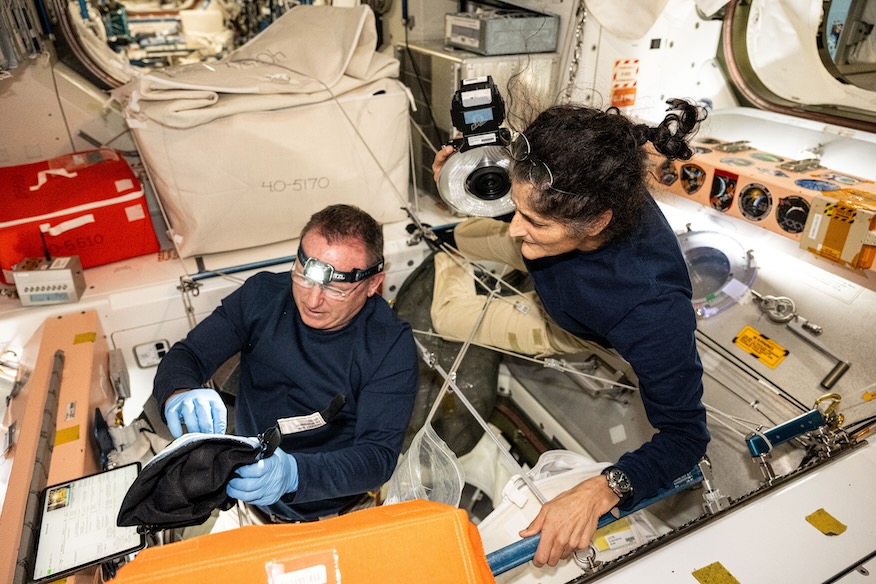
NASA is at a crossroads when it comes to the conclusion of the Boeing Starliner Crew Flight Test. The agency will announce its decision on whether or not to return NASA astronauts Barry “Butch” Wilmore and Sunita “Suni” Williams on Starliner as originally intended or on a SpaceX Crew Dragon.
The choice will be formalized after an agency-wide meeting called a flight readiness review concludes on Saturday. A press conference is scheduled for 1 pm EDT (1700 UTC).
Spaceflight Now will have live coverage of the decision beginning approximately 30 minutes before the press conference begins.
The review will serve as a final overview of the learnings of the past two months related to several helium leaks detected on the Starliner service module, as well as problems in five thrusters, which were detected during the rendezvous and docking with the International Space Station after the mission. launched on June 5.
In its most recent comments on the matter, in the form of an August 2 blog post, Boeing argued that the “extensive tests of its propulsion system in space and on the ground” give it “high ” confidence to be able to return Wilmore. and Williams safely on Starliner as originally planned.
“Our confidence is based on this abundance of valuable tests by Boeing and NASA. The test confirmed that 27 of 28 RCS thrusters are healthy and returning to full operational capacity,” wrote Boeing in its post. “Starliner’s propulsion system also maintains redundancy and helium levels remain stable. The data also supports the helium and propellant cause assessments and the flight rationale for Starliner’s return and of his crew to Earth.”

During teleconferences held over the past month, NASA officials have not explicitly said they are leaning one way or another, but each briefing to members of the press included more information about which scenario that featured a return using SpaceX’s Dragon spacecraft instead of Starliner. it would seem
“With Starliner Crew Flight Test, the option to bring the crew home on Starliner or to bring the crew home in another vehicle, we can take either path and reasonable people can choose the “one way or the other, depending on where their view is on our position. in the related uncertainty that we have for the data that we have on the propulsion system,” said Ken. Bowersox, NASA’s associate administrator for the Space Operations Mission Directorate in an Aug. 7 teleconference.
“So, going forward, what we are trying to do is to reduce this uncertainty, see if we can lead a little more consensus among our team. At the same time, becoming more serious about evaluating our other options.”
Bowersox is a former astronaut who has lived experience in facing the need for a spaceship pivot. He was aboard the International Space Station in 2003 when the Columbia disaster occurred and returned to Earth on a Soyuz spacecraft after NASA decided to ground the space shuttle fleet.
He said that while NASA’s safety culture two decades ago allowed for input through NASA’s Safety Reporting System, he said the impact of input from a wide range of voices is even greater. great today.
“If you saw something that was not good, you should bring it up and something could be raised immediately. But what our current process does is that it increases the volume on those inputs from the technological authorities, from the security people, the “engineering, from the flight crew, centers and gives us a formal way to encourage and analyze and make a decision on dissenting opinions,” said Bowersox during an Aug. 14 conference call.
“So, there’s also a point where everything comes together, right, and that’s at the top. This gives that person at the top a chance to get the best information when the decision is made.”

The current man at the top, NASA Administrator Bill Nelson, will absorb all the analysis on Starliner carried out in the last two months, both in orbit and in testing done on the ground in a variety of places.
If the agency opts for the Crew Dragon contingency plan, SpaceX will launch the spacecraft atop its Falcon 9 rocket no earlier than September 24 with only two of the four original crew members on board. It will also bring with it two flight suits for Wilmore and Williams to support a return flight home in February 2025.
This decision will expand its stated one-week trip to almost 270 days in orbit. In that scenario, the Starliner spacecraft will land autonomously and unmanned in early September with a landing at White Sands, New Mexico, similar to the unmanned Orbital Flight Test 2 (OFT-2) in 2022.

